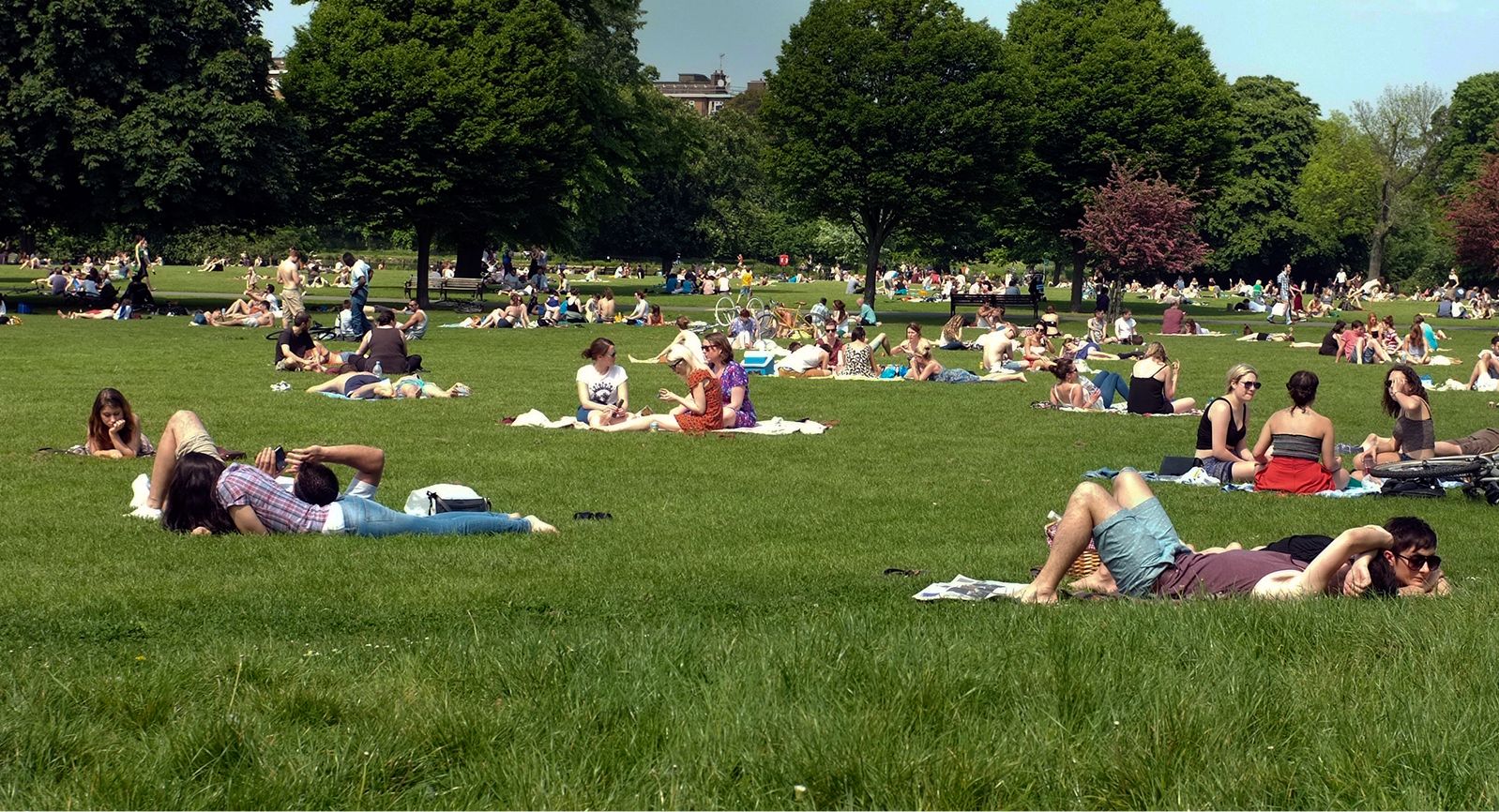Enhancement through light
Imagine it’s summer and you get home early from work. Entering your day-lit living room, you can see people in the luscious green park outside. How would you like to continue your day? Stay inside on your own and sit in front of the TV, or go out to the park and meet some friends?
Now imagine the same living space in January. You turn on your living room lights, as the windows are pitch black and the outside world is dark and quiet. What activities tempt you now? Do you rush out to meet friends or is it more tempting to curl up on the couch and watch your favourite TV show? Should we believe studies on human behaviour and depression 1, 2, it is likely that you would feel more tempted to stay inside in this second scenario. In summer it seems much easier to get off the couch and get in touch with people, whilst the winter darkness makes us less energetic. The graph below shows an average activity level during the year, clearly showing less activity during winter months.

Elizabeth Mendes – Gallup
Architectural lighting designers are taking on the challenge to adjust the mood of our interiors. The images below compare lighting during day to one often used at night, and present a good example of how light changes the mood of a space. Can a change of lighting design make an interior space feel as energetic in winter as it does in summer? This challenge has been around for centuries, but has only recently started to taste a solution.

A 2014 study I did on the effects of lighting on social interaction ³ found connections between changes in mood and behaviour to changes in lighting. The participants watched TV in three different lighting environments. Changes in mood and behaviour were compared between the environments. The study found that people interact more with their surroundings in light settings where objects with social connotations (books, movies, games etc.) are the main focal points. The study noticed that subjects talked more in dim light settings, but that topics related more often to the TV show watched. Thoughts and stories about the outside world were shared more often in the brighter light environments. The study suggests that illuminating objects that carry stories from the external world connects the interior with the exterior environment. The findings take a small step in the direction of understanding the ways we are affected by light, and hope to inspire future lighting design and research to develop schemes that enhance social interaction.
The public environment is increasingly lighting objects and interesting architectural elements, shifting the focus from the ground to our surroundings. Perhaps applying this in domestic interiors could be the new trick to getting us off the sofa…
[1] Elizabeth Mendes, U .S. Health Habits Continue Sharp Winter Decline. Technical report, 2011. Accessed 25.08.2014. URL https://www.gallup.com/poll/151424/ health-habits-continue-steep-winter-decline.aspx.
[2] Breanne K. Hawes, Tad T. Brunyé, Caroline R. Mahoney, John M. Sullivan, and Christian D. Aall. Effects of four workplace lighting technologies on perception, cognition and affective state. International Journal of Industrial Ergonomics, 42 (1):122–128, January 2012. ISSN 01698141. DOI: 10.1016/j.ergon.2011.09.004.
[3] Evensen, I. A study on the effects of lighting on social interaction. DOI: 10.13140/2.1.3722.1769. Web. Sept 2014.
Blog post by Ida Evensen


